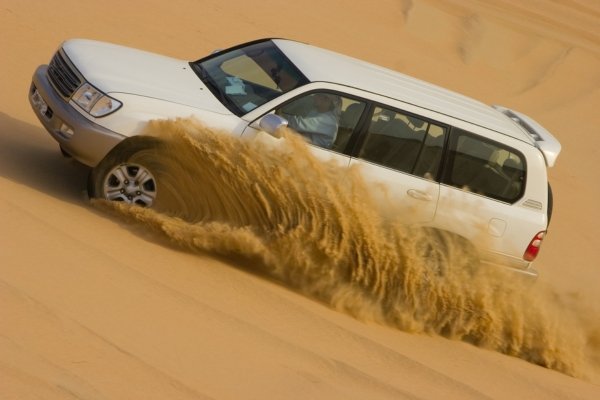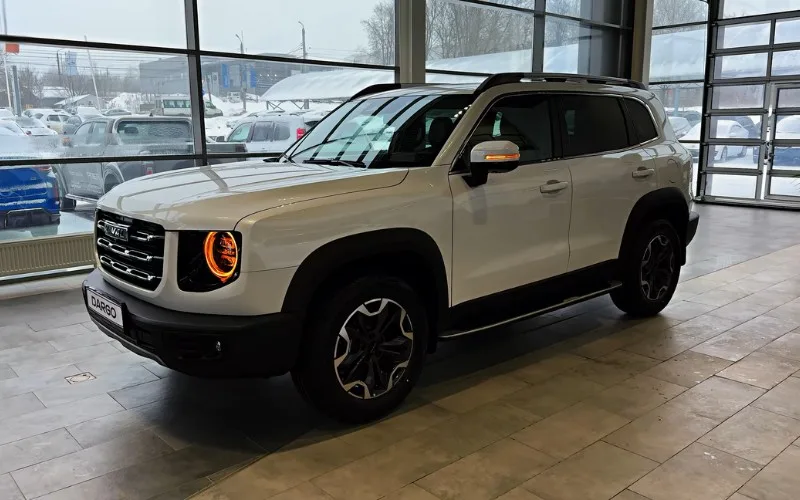Driving Tips for Desert Adventures: Navigating the Sands Safely

When embarking on a desert adventure, whether a thrilling off-road excursion or a scenic drive through arid landscapes, understanding the unique challenges of desert driving is essential. From the scorching heat to treacherous terrain, this guide will provide invaluable tips on staying safe and making the most of your desert adventure. So, when and how should you prepare for this unique driving experience?
Choose the Right Time: When planning your desert adventure, timing is crucial. Opt for the cooler months to avoid extreme heat. The ideal window for desert driving typically falls between October and April. Moreover, planning your drive during the early morning or late afternoon when temperatures are milder can significantly enhance your experience.
Vehicle Selection: How Should You Choose the Perfect Vehicle for Your Desert Adventure?
A 4×4 vehicle with high ground clearance is your best bet. SUVs and trucks with off-road features and all-terrain tires are ideal for navigating sandy dunes and rough desert trails. Ensure your vehicle is in excellent mechanical condition to prevent breakdowns in the harsh desert environment.
Tire Pressure Adjustment: Tire pressure plays a critical role in maintaining traction when driving in the desert. Lowering your tire pressure allows for a larger contact patch with the sand, improving grip. Carry a portable air compressor to reinflate your tires before returning to paved roads.
Carry Essential Equipment: When and how should you prepare for unexpected situations in the desert? Pack essential equipment such as a first aid kit, recovery straps, a shovel, and a high-lift jack. Additionally, ensure you have plenty of water, as dehydration is a significant concern in arid environments.
Navigation Tools: Navigating the desert can be challenging due to the need for landmarks and shifting dunes. GPS devices and topographic maps are invaluable tools to keep you on the right track. Familiarize yourself with your chosen route before embarking on your journey.
Stay Hydrated: Proper hydration is paramount in the desert. Carry an ample supply of water for both you and your vehicle. You can quickly become dehydrated in extreme heat, leading to fatigue and impaired decision-making. Drinking water at regular intervals is a must.
Be Prepared for Extreme Weather: Desert weather can be unpredictable. Sandstorms, flash floods, and extreme temperature fluctuations are typical. Pack clothing suitable for both hot days and chilly nights. Watch weather forecasts and be prepared to change your plans if necessary.
Reduce Speed and Maintain Distance: Slow down and maintain a safe distance from other vehicles when driving on sandy terrain. Quick maneuvers can lead to loss of control on loose sand. Gradual movements and a cautious approach are essential for safe desert driving.
Respect the Environment: How should you behave when exploring the desert? Respect the fragile desert ecosystem by staying on designated trails and avoiding disturbing wildlife. Leave no trace and dispose of waste properly to preserve these unique landscapes for future generations.
Emergency Communication: Always inform someone about your desert adventure plans, including your intended route and estimated return time. Carry a satellite or reliable communication device in emergencies, as cell phone reception may be limited in remote desert areas.
Fuel Up Before You Go
Fill your vehicle’s gas tank before starting your desert journey. Gas stations can be few and far between in desert regions.
Vehicle Maintenance
Prioritize a thorough vehicle check-up before departing. Ensure brakes, fluids, and cooling systems are in top condition.
Plan Your Route
Carefully plan your route, considering landmarks, fuel stops, and potential rest areas. Share your itinerary with someone trustworthy.
Travel with a Companion
Travelling with a partner or group is safer than going alone in emergencies.
Air Filter and Engine Cooling
Replace or clean your vehicle’s air filter and monitor engine temperature closely, as desert conditions can strain the engine.
Sand Driving Techniques
Learn sand driving techniques like reducing tire pressure further for soft sand and using a gentle, rolling motion to ascend dunes.
Recovery Techniques
Understand recovery techniques such as using sand tracks and winches to get unstuck from sandy or muddy situations.
Wildlife Awareness
Be aware of desert wildlife, including snakes and insects. Avoid close encounters and know how to respond if bitten.
Emergency Shelter
Carry a portable shelter, such as a pop-up tent or an emergency bivouac, if you need to spend an unexpected night in the desert.
Light and Visibility
Equip your vehicle with bright LED lights to enhance visibility during nighttime driving, especially on poorly marked desert roads.
Respect Local Regulations
Research and comply with local regulations and permits required for desert driving, especially in protected areas.
Stay Informed
Stay updated on current desert conditions and potential hazards through local authorities and online resources.
Sun Protection
Protect yourself from the scorching desert sun with sunscreen, sunglasses, and a wide-brimmed hat.
Keep Essentials Within Reach
Keep essential items like water, maps, and communication devices within easy reach, not buried deep in your vehicle.
Plan Breaks and Rest Stops
Schedule regular breaks to rest, rehydrate, and assess your progress. Desert driving can be physically demanding.
Know Your Vehicle’s Limits
Understand your vehicle’s capabilities and limitations, and only attempt maneuvers within its capabilities.
Trail Etiquette:
Follow trail etiquette by yielding the right of way to other vehicles and minimizing environmental impact.
Share Your Location
Use smartphone apps or GPS trackers to share your real-time location with friends or family for added safety.
Be Prepared for Dust
Dust is a constant companion in desert driving. Use dust masks to avoid respiratory issues.
Recovery and Survival Training
Consider taking a basic desert survival and recovery training course to enhance your skills and knowledge.
By covering these additional topics in your blog, you’ll provide comprehensive guidance for anyone venturing into the desert, ensuring their safety and enjoyment of this unique driving experience.
Pack a comprehensive recovery kit with traction boards, a snatch strap, a winch, and a tree trunk protector to escape tricky situations.
Desert-Ready Camping Gear
If you plan to camp in the desert, invest in camping gear designed for extreme temperatures, including insulated sleeping bags and thermal clothing.
Wildlife Encounter Safety
Learn how to react to wildlife encounters, such as avoiding sudden movements around snakes and knowing how to observe desert animals from a distance safely.
Communication Protocols
Establish clear communication protocols with your travel companions to ensure everyone is on the same page in emergencies or unexpected situations.
Sand and Dust Protection
Protect your vehicle’s engine and vital components from sand and dust infiltration with appropriate air filters and seals.
Desert-Specific Navigation Apps
Use GPS and mapping apps specifically designed for desert navigation, as they may offer more accurate information and waypoints.
Plan for Mechanical Failures
Prepare for potential mechanical failures by carrying spare parts and tools for your vehicle’s make and model.
3 Desert Photography Tips
Capture the stunning beauty of the desert by following photography tips for dealing with harsh sunlight, sand, and unique desert landscapes.
Leave-No-Trace Ethics
Embrace the Leave-No-Trace principles, which include packing out all waste, avoiding unnecessary noise, and respecting cultural and historical sites.
Emergency Response Plan
Develop a detailed emergency response plan that includes contact information for local authorities, medical facilities, and tow services in the area you’re exploring.
Desert Terrain Types
Familiarize yourself with various desert terrain types, from dunes to rocky plateaus, and understand how each demands different driving techniques.
Pre-Trip Vehicle Inspection
Conduct a thorough pre-trip vehicle inspection, checking brakes, suspension, steering, and all fluid levels.
Desert Navigation Apps
Explore navigation apps that offer offline maps and GPS tracking, which can be especially helpful when cellular signals are weak.
Desert Wildlife
Learn about the unique flora and fauna of the desert and how to observe and respect these ecosystems.
Desert Camping Tips
If camping in the desert, follow best practices for setting up camp, including anchoring tents in the sand and proper food storage.
Desert Cooking Precautions
Be cautious when cooking in the desert to prevent wildfires; use camp stoves or designated fire rings when available.
Desert Night Sky Viewing
Take advantage of the desert’s low light pollution for stargazing; bring a telescope or binoculars for an unforgettable experience.
Desert Flora and Medicinal Plants
Learn to identify desert plants that have medicinal properties and could be helpful in emergencies.
Vehicle Recovery Skills
Practice vehicle recovery skills before your trip to ensure you can handle common off-road scenarios.
Desert Music Playlists
Create desert-themed playlists to enhance the ambience of your journey; think desert rock, world music, and ambient sounds.
Desert Travel Etiquette
Respect the solitude of the desert by keeping noise levels down and maintaining a peaceful atmosphere for all travellers.
Dealing with Desert Insects
Understand how to prevent and treat insect bites, especially during the warmer months when insects are more active.
Desert Camping Permits
Check if you need permits for camping in desert areas, and obtain them in advance to avoid legal issues.
Desert History and Culture
Explore the history and culture of the desert regions you’ll visit to gain a deeper appreciation of the landscape.
Emergency Signal Devices
Carry emergency devices like flares, signal mirrors, or personal locator beacons for distress situations.
Desert Hygiene
Maintain hygiene by packing biodegradable soap and practicing responsible waste disposal, including human waste.
Desert Fitness
Prepare physically for desert adventures by staying in shape and acclimating to the heat through regular exercise.
Desert Artifacts and Fossils
Learn to identify and appreciate desert artifacts and fossils while respecting their historical significance.
Desert Geology
Understand the geological formations of deserts, which can help you appreciate the natural beauty of these landscapes.
Desert Wind Precautions
Be mindful of strong desert winds, which can impact vehicle control and visibility; reduce speed and secure loose items.
Documenting Your Journey
Keep a travel journal or create a blog to document your desert adventure, sharing your experiences with others.
Desert Survival Skills
Take a desert survival course to learn essential skills like finding water sources and building shelters.
Desert Photography Gear
Invest in quality photography gear, including UV filters and lens hoods, to capture the desert’s unique lighting conditions.
Desert Art and Sculptures
Discover and appreciate desert art installations and sculptures that often blend seamlessly with the landscape.
Desert Research Centers
Visit desert research centers and museums to gain insights into ongoing studies and conservation efforts.
Permits for Protected Areas
Check for specific permits and regulations governing access and activities to visit protected desert areas.
Solo Desert Travel
If travelling alone, take extra precautions and ensure you have reliable communication and emergency plans in place.
Desert Astronomy Apps
Use astronomy apps to identify constellations and celestial objects visible in the desert night sky.
Desert Safety Apps
Download safety apps that provide weather updates, emergency contact information, and navigation assistance.
Leave No Trace Ethics for Campfires
If you choose to have a campfire, adhere to Leave No Trace principles by using established fire rings and minimizing impact.
Solo Vehicle Recovery Techniques
If you find yourself stuck without assistance, learn solo recovery techniques, such as using a sand anchor.
Desert Birdwatching
Bring binoculars and a field guide to identify and enjoy the diverse bird species in desert habitats.
Navigation by Celestial Bodies
Learn primary navigation by stars, sun, and moon, which can be invaluable when GPS signals are weak in the desert.
Desert Adventure Tours
Consider joining guided desert adventure tours led by experienced experts to explore safely.
Desert Mindfulness and Meditation
Embrace the serenity of the desert by practicing mindfulness and meditation amid its vast solitude.
Desert Wildlife Rehabilitation Centers
Support local wildlife rehabilitation centers that care for injured or orphaned desert animals.
Emergency Shelter Building
Brush up on your emergency shelter-building skills using materials found in the desert environment.
Cultural Sensitivity
Respect indigenous cultures and sacred sites in desert regions by adhering to local customs and traditions.
Desert Language Phrases
Learn basic phrases in the local language or dialect, which can enhance your interactions with desert communities.
Desert Writing and Artistic Inspiration
During your journey, draw inspiration from the desert’s stark beauty for writing, art, or other creative endeavors.
Conclusion
A thorough preparation and a deep understanding of desert driving conditions are essential when embarking on a desert adventure. By following these tips on when and how to navigate the desert safely by Royal Star Car Rental, you can ensure a memorable and worry-free journey through some of the world’s most stunning and challenging landscapes. Remember, the desert may be harsh, but it can also be gratifying with the right approach.
Regenerate




